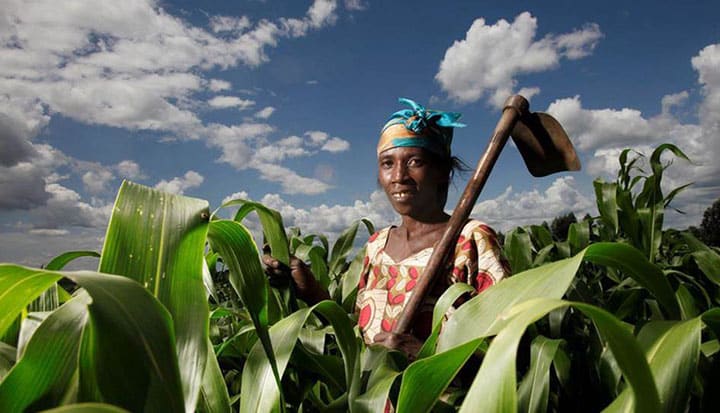By David Norman, Challenge Director, Business Fights Poverty
Millions of smallholders live in poverty, unable to meet basic needs. Smallholder farmers need to improve their incomes and competitiveness if they are to achieve and sustain a decent standard of living, reinvest in their farms, and continue to supply a sustainable crop to multinational companies.
The business benefits of investing in smallholder supply chains are clear. They can include long-term supply security, improved quality and yields, greater supply chain transparency and new market creation. Supporting smallholders can also build stronger government relationships, increase ability to meet stakeholder expectations, enhance reputation, and align with initiatives such as the UN Sustainable Development Goals (SDGs). In some cases, investing in local supply chains reduces costs and minimises price volatility and currency risks.
Businesses are increasingly aware of these benefits, and of rising societal expectations for companies to play their mutual role in improving farmer incomes. However, while progress has been made in understanding and enhancing smallholder supply chains, significant challenges remain.
Empowering farmers to improve their incomes is complex, as farming families rarely earn money from a single source. In addition to selling one or more crops, they may sell animals and animal products, run a taxi, take in laundry, or collect firewood. Most farming families also rely on subsistence crops and livestock they produce and eat.
Mars, Incorporated and AB InBev[1], working with the Sustainable Food Lab and Business Fights Poverty, have explored the roles different actors can play in improving smallholder incomes. The research confirmed that many levers affect incomes, requiring input from actors such as national governments, international donors, UN agencies, local and multinational businesses, financial institutions, industry bodies, and multi-stakeholder groups.
The levers affecting incomes include:
- Access to agricultural services including know-how, inputs (seeds, fertiliser, tools), equipment and machinery
- Growth in domestic and international markets Decent markets with stable demand, fair prices, and favourable trade terms
- Access to financial services such as credit, loans, savings, and insurance
- Increased participation of women and youth, and equal economic empowerment
- A strong local economy.
Ultimately, the purpose of improving incomes is to improve quality of life. However, this also relies on farming communities gaining access to basic public services such as water, health and education.
Some levers are within an actor’s control, some are within their sphere of influence, and some are neither. Companies are usually best placed to help improve the portion of income derived from the crops they buy. They can also collaborate with others, including governments, donors and civil society, to bring about the systemic changes needed.
Two examples from India and Uganda show how the different levers can work together to improve incomes in a sustainable way.
Mint in India
 Most commercial mint species produce both the flavour of mint oil and the cooling sensation of menthol, but only Mentha arvensis has high enough menthol levels to produce menthol as a standalone bi-product. It is produced almost exclusively by 750,000 smallholders in northern India. Many of these farmers live below the $1.90/day poverty line, often growing staple crops to feed their families on less than a hectare of land. They plant mint in between crops of these staples, and it is usually their only cash crop. Smallholders distil the mint oil, which unlike most other crops will survive in a container for years if properly stored, acting as savings as well as an income source. Smallholders can sell when the price is right, or when they need cash for farm inputs, healthcare or education.
Most commercial mint species produce both the flavour of mint oil and the cooling sensation of menthol, but only Mentha arvensis has high enough menthol levels to produce menthol as a standalone bi-product. It is produced almost exclusively by 750,000 smallholders in northern India. Many of these farmers live below the $1.90/day poverty line, often growing staple crops to feed their families on less than a hectare of land. They plant mint in between crops of these staples, and it is usually their only cash crop. Smallholders distil the mint oil, which unlike most other crops will survive in a container for years if properly stored, acting as savings as well as an income source. Smallholders can sell when the price is right, or when they need cash for farm inputs, healthcare or education.
In 2015, with the assistance the Sustainable Food Lab and Agribusiness Systems International (ASI), the Wm. Wrigley Jr. Company conducted an initial study in the mint growing area around Lucknow in Uttar Pradesh, India. It reflected that mint generates a significant portion of annual household crop income at about 39% when the economic value of sustenance crops being grown for household consumption is considered. As a portion of total household cash income mint provides about 12% in addition to cash from day labour, selling handicrafts and animal products, and small-scale forestry. Approximately 60% of a household’s food needs are grown on their farm. Cash income generated from mint and other income generating activities is used to purchase additional food items, farm inputs, housing, healthcare, education, marriage, and unforeseen costs.
By focusing on mint agricultural practices including improvements in rootstocks and know-how, there is potential to improve smallholder incomes from mint without disrupting their other income generating activities. Wrigley, together with ASI and two of Wrigley’s mint suppliers, are proceeding cautiously and are continuing to test and learn which practices can be quickly scaled, listening to smallholders and engaging with actors in the local mint value chain. In 2016, good agricultural practices including two new cultivars, modified irrigation techniques and different mulching practices were trialled on 180 test plots in Uttar Pradesh. The results showed that water use can reduce significantly, while increasing yields by 50-100%. Based on these promising results, Wrigley is scaling up to work with 2,500 farms in 2017.
Sorghum in Uganda
When SABMiller acquired Nile Breweries Limited (NBL) in 1997, beer was considered a luxury in Uganda. Alcohol was popular, but people opted for cheaper, unregulated brews that threatened public health. NBL introduced a new, low-cost beer made with local sorghum instead of imported barley, enabling 15,000 subsistence farmers to access commercial markets and improve their incomes.
Eagle Lager was introduced in 2002. An impact study in 2016 among 800 smallholders found the average annual income of sorghum households supplying NBL to be more than double that of a control group. Sorghum accounts for 31% of total household income, while the rest comes from other crops and activities. Sorghum earnings are 17% higher when married couples manage their plots together, compared with plots managed by husbands alone. This shows that empowering women through agriculture has a positive impact on yields and development.
Many stakeholders acted together to make this possible. NBL’s core contribution was a secure market – the company invested in commercialising a new crop and developing a new supply chain, including a network of farmers’ associations and aggregators made up of thousands of smallholders. NBL also invests in agricultural extension services, skills training and subsidised inputs. Critically, the Ugandan government offered an excise tax break for beer made with local ingredients, enhancing the business case for NBL. Because of limited clean water and high HIV infection rates, civil society organisations and government health departments carried out community health campaigns, with funding from USAID and NBL. In 2016, to further strengthen skills and competitiveness in the sorghum supply chains, NBL partnered with TechnoServe to roll out a capacity building programme for aggregators and 2,000 farmers – with a focus on women and youth empowerment.
These two examples show how different actors can play complementary roles in improving smallholder incomes, combining their efforts to make agriculture an attractive and profitable industry that preserves natural resources and generates shared value.
Understanding how these actors and roles within a crop sector or ecosystem can sustainably increase incomes is complex, and should be based on multi-stakeholder dialogue. For more information, please contact Stephanie Daniels at Sustainable Food Lab.
[1] This project was initiated with SABMiller plc and continued under AB InBev. The business combination of SABMiller plc with AB InBev was completed on 10 Oct 2016.











One Response
I’m puzzled!
There seems to be no reference to climate change and its effect on agriculture!
There is no mention of CSA (Climate Smart Agriculture)now supported by many large corporations.
Please explain?